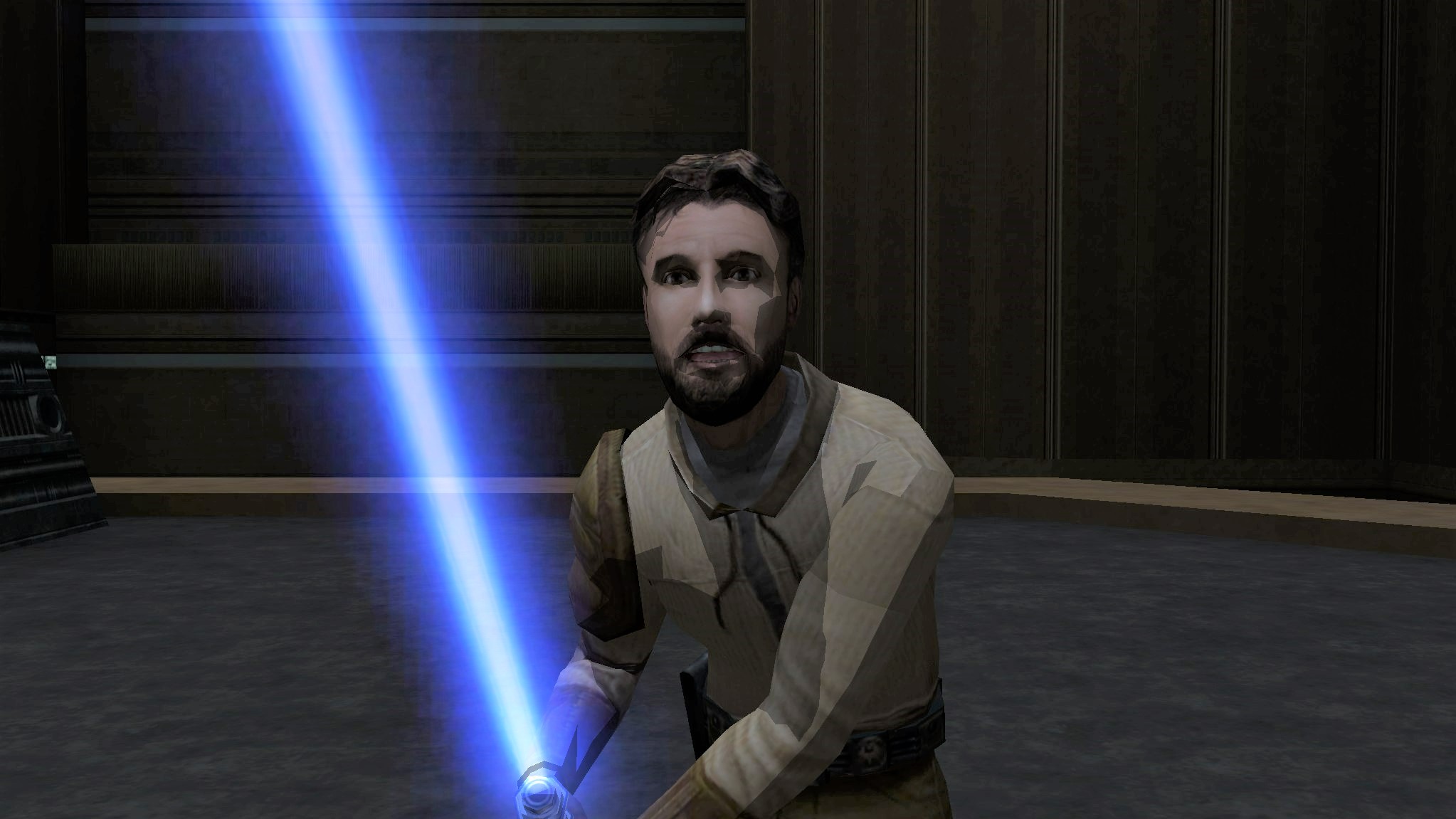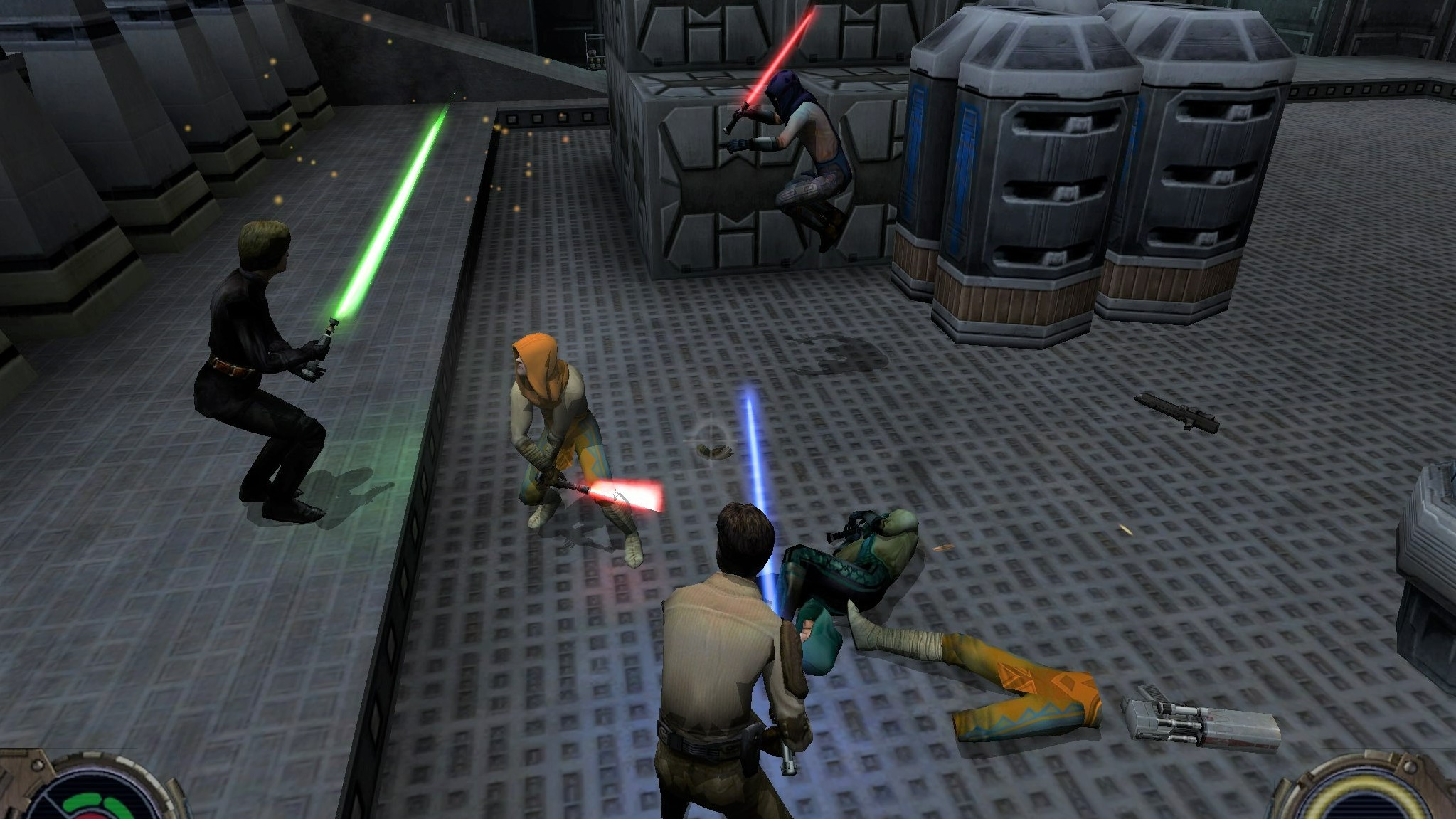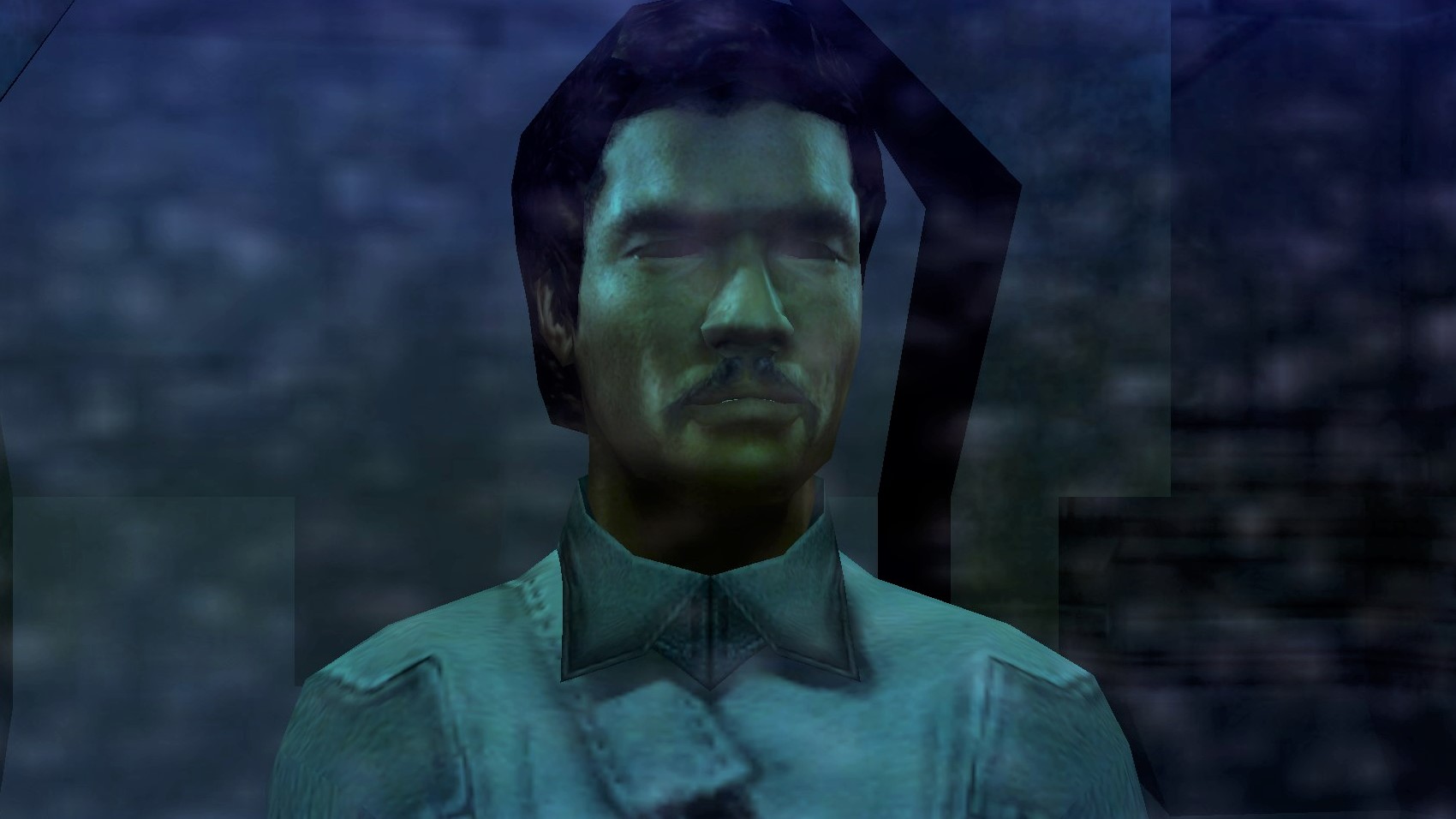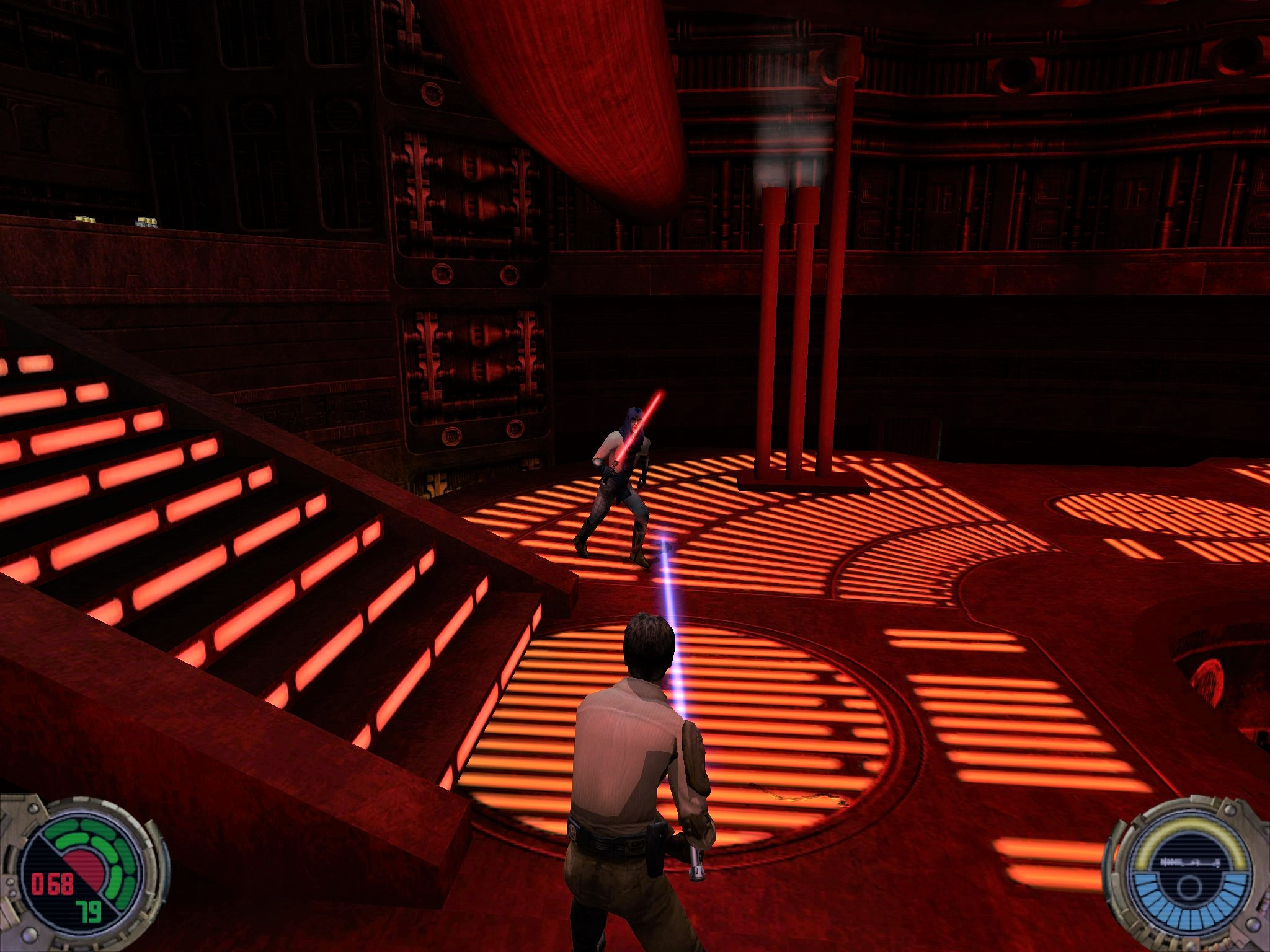
This article first appeared in PC Gamer magazine issue 385 in June 2023, as part of our Reinstall series. Every month we load up a beloved classic—and find out whether it holds up to our modern gaming sensibilities.
Has Jedi Outcast finally had its day? For over 20 years, Raven Software’s sequel to 1997’s Jedi Knight has (with its sister game Jedi Academy) been the gold standard for Jedi-based action. Its masterful portrayal of Force powers and lightsaber combat has never been bettered, not even by mega-budget Star Wars games like The Force Unleashed or Jedi: Fallen Order.
Yet the sequel to Fallen Order, Jedi: Survivor, had me doubting. Respawn’s follow up is not only a spellbinding action-adventure, but also a far better Jedi simulator than Fallen Order was. It has more force powers, a wider range of lightsaber stances, enemies that are more fun to fight, and crucially, a blade that cuts through Stormtroopers rather than simply clobbering them. It’s the first Jedi game since Outcast and Academy that feels worthy to join the council, possibly even lead it.
The only way to ascertain the truth was to play Jedi Outcast again, which doesn’t take much convincing, but it’s nice to have an excuse. And having spent a few evenings carving my way through the Star Wars universe, the answer intrigues me. Jedi: Survivor is a better game than Jedi Outcast. But only in some areas.
One such area is the introduction. Jedi Survivor kicks off with a daring heist on Coruscant that lets you wield most of the toys you unlocked in the previous game from the start.
Outcast, by comparison, has you play the first five levels of the game without any Jedi powers at all. After falling to the dark side in Jedi Knight before being rehabilitated by Mara Jade in the game’s Mysteries of the Sith expansion, wisecracking spacebeard Kyle Katarn cuts himself off from the force. Katarn then returns to his mercenary ways, relying only on a blaster and his friend and pilot Jan Ors. Outcast kicks off with Kyle and Jan exploring an Imperial Remnant outpost for Mon Mothma, where they discover the imps have been conducting experiments with crystals. And no, not like your new-age aunt does.

Patience young padawan
Jedi Outcast’s introduction isn’t terrible. It serves a necessary purpose, and the game is a capable shooter (it is built in the Quake 3 engine, after all.) But it’s overlong and, given how dominant the lightsaber becomes in its second half, too stingy with its weapon roster. Blasting Stormtroopers in Kejim Outpost is entertaining enough, but having your ankles nipped at by tiny aliens in Arcturus Mines is a total bust. The nadir is a sequence where you escort an Imperial officer up a flight of stairs in the detention centre, which takes aeons as he moves at the speed of a Hutt after a big dinner.
Flawed as it is, though, the intro isn’t the part of the game which has aged the most. As Kyle and Jan prepare to leave Arcturus, purple Sith dinosaur Desann turns up and tosses Kyle around like a bouncy ball, starting him down the path of reconnecting with the force. After stopping off at the Valley of the Jedi to get his powers back, then visiting Luke’s Jedi temple on Yavin IV to retrieve his lightsaber, Kyle heads to Coruscant’s evil twin Nar Shaddaa, hot on the trail of a Rodian named Reelo Baruk who Kyle believes can lead him to Desann.
The biggest gaming news, reviews and hardware deals
Keep up to date with the most important stories and the best deals, as picked by the PC Gamer team.
When I first played Jedi Outcast, I loved Nar Shaddaa. Its twisting, vertiginous environment seemed astonishing at the time, and its playful brand of sci-fi seediness is eternally appealing. The initial sequence in the bar is great too. That your first lightsaber fight involves slicing up a bar full of gangsters is a fun callback to A New Hope, and I love Kyle’s bizarre line, “Never trust a bartender with bad grammar.”

But the rest of this section has lost much of its appeal. The complex environment means you constantly have to stop and look around to navigate. This is fine in isolation, but stopping means being murked instantly by Rodian snipers armed with disruptor rifles, or blown to Bogano by three-eyed Grans who can toss thermal detonators like a tennis-ball machine. Kyle’s movement also has a slight slipperiness to it which makes platforming incredibly precarious. The game isn’t difficult, per se. But it throws a lot of traps your way, which makes progress through this section more about trial and error than actual skill.
Moreover, fighting enemies without lightsabers is one area Jedi: Survivor has Outcast beat. Your Force powers and ability to parry blaster bolts are both much more effective and much more fun to use in Survivor, particularly Cal’s penchant for pulling Stormtroopers onto the point of his saber. In Outcast, you spend a lot of time chasing enemies around, flailing at them with your blade. It’s fun, but feels less refined.
All that changes when you meet Lando Calrissian (voiced with mixed enthusiasm by Billy Dee Williams) and escape in his luxury space yacht to Bespin. Despite being literally in the sky, Cloud City has far less in the way of deadly drops, while the cheap-kill gangsters gradually give way to more dependably dangerous Stormtroopers. Best of all, Bespin is where Outcast introduces the Reborn, the Sith warriors artificially infused with the Force by Desann.
A lightsaber master
Duels play out differently every time, making them endlessly replayable.
The moment the Reborn arrive on the scene, Jedi Outcast lights up. Their introduction is superbly handled too. There’s no great fanfare, no hint at what awaits you at the top of one of Cloud City’s colossal ventilation tubes. You get to the top, there’s a quick cutscene, and suddenly you’re trading blows with a hooded fellow wielding a red lightsaber. You’re every bit as surprised as Kyle is.
From here on out, Jedi Outcast is a stone-cold masterpiece. The way it elaborates on this initial fight is masterful. The next encounter takes place a few rooms later, inside a carbonite chamber you’ve been searching for. In other words, Jedi Outcast lets you play out Luke’s iconic duel with Vader at the climax of Empire in the second lightsaber fight of the game. From here, the flights become more intense. While dangerous, the Reborn are clearly no match for a real Jedi, so they start to ambush you from the shadows or attack you in groups. Eventually, they start wearing lightsaber-resistant armour, making them much more durable and able to stay in the fight longer.
And yes, the lightsaber combat itself is still fantastic, and is where Raven has the edge over Respawn. Jedi: Survivor does some things better, particularly parrying enemy lightsaber attacks. But ultimately, Respawn’s system is still couched in canned animations and stylish finishing moves, lacking the free-flowing dynamism of Jedi Outcast. The fact that lightsaber damage is decoupled from whether you’re swinging it or not means enemies can be killed at any moment during a fight, whether you deliberately slice their arm off, or if they catch their foot on your blade as they try to leap over you. Consequently, duels play out differently every time, making them endlessly replayable, and endlessly compelling.

Compare that to the lightsaber duels in Jedi: Survivor, and while there is definitely fun to be had in them, and thanks to different combat stances there is some replayability on offer as you test out how each works against specific enemies, the fact that you’re still locked in to those canned animations means there is still a formulaic feel to duelling. Jedi: Survivor never really shakes off its Dark Souls combat mechanics, and that means there’s a level of baked-in rigidity that Jedi Outcast doesn’t have. This doesn’t always play in the older game’s favour, as there are times when you’ll be defeated in lightsaber combat seemingly unfairly, with the more organic movement of the blade leading to unpredictable, frustrating failures. But, overall, it adds incredible dynamism and spice to each battle.
One other area where Outcast holds its own against Jedi: Survivor is storytelling. Survivor’s story is grander, better performed, and plays with more interesting ideas. But Outcast has the more coherent plot and a stronger main character. Like Crystal Dynamics’ version of Lara Croft, Cal Kestis is defined more by external trauma than any core personality traits, whereas Kyle has a clear worldview and a coherent internal life. He also isn’t a good person by default. He’s cynical, spiteful and quite happy to lower himself to the level of his enemies. He’s already fallen to the dark side once, which means he must work at being a Jedi, and hold himself to a higher standard. This makes him feel a much more adult, layered, complex protagonist than Jedi: Survivor’s Cal, who emotionally remains skin deep and more simple as a character.
Has Jedi Outcast finally had its day? Absolutely not. Instead, it’s an older, wiser companion to Jedi: Survivor’s youthful exuberance. The master to the apprentice. Its flaws may be more visible with age, and it takes longer than ever to get to the good stuff. But when Jedi Outcast draws its lightsaber, it can still duel with the best of them.
Rick has been fascinated by PC gaming since he was seven years old, when he used to sneak into his dad's home office for covert sessions of Doom. He grew up on a diet of similarly unsuitable games, with favourites including Quake, Thief, Half-Life and Deus Ex. Between 2013 and 2022, Rick was games editor of Custom PC magazine and associated website bit-tech.net. But he's always kept one foot in freelance games journalism, writing for publications like Edge, Eurogamer, the Guardian and, naturally, PC Gamer. While he'll play anything that can be controlled with a keyboard and mouse, he has a particular passion for first-person shooters and immersive sims.

